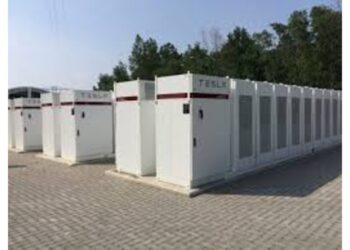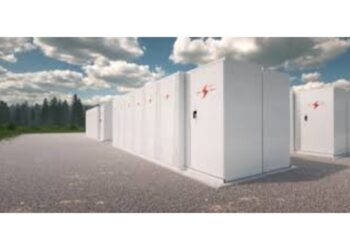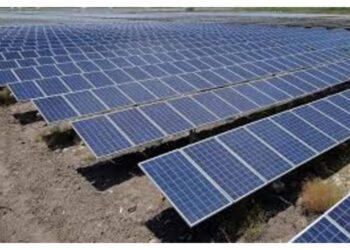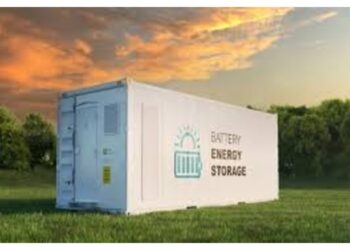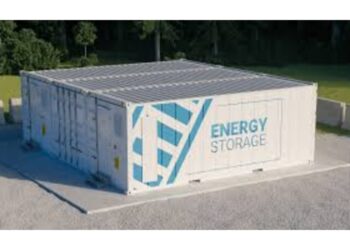- Israeli stock exchange-listed Augwind Energy is planning the world’s first commercial-scale AirBattery in Germany, using underground salt caverns to store compressed air for electricity generation when needed, with commissioning set for 2027-2028
- The system stores surplus renewable energy from days and up to months at a time, reducing dependency on international markets and stabilising electricity prices
- Germany already has over 400 caverns suitable for AirBattery, and geological potential for storing 330 TWh in total, the equivalent of 60-65% of Germany’s annual electricity usage
- AirBattery is highly cost-effective at 10-15USD per kWh, environmentally friendly with almost no hardware degradation (over 40 years project’s lifetime). In addition, AirBattery uses locally sourced materials instead of critical and non-local minerals needed for lithium-ion batteries
- This technology supports the energy transition through economical addition of intermittent renewable capacity whilst reducing the need for costly grid extension
- The long-duration energy storage capability helps stabilise electricity prices, increase energy independence, and reduce dependency on volatile fossil fuel markets
Tel Aviv, Israel : Augwind Energy announced it intends to build its first commercial-scale AirBattery project in Germany. The facility will be the world’s first industrial-scale operational installation of Augwind’s AirBattery Hydraulic Compressed Air Energy Storage (CAES) technology designed specifically for grid-scale storage for up to months at a time – a game-changer for the global energy transition.
In regions such as Germany and elsewhere in central Europe, long periods of low solar and wind output known as ‘Dunkelflautes’ severely challenge grid stability. Augwind’s AirBattery offers a resilient buffer, providing backup for up to months helping utilities, grid operators and traders to deal with renewables intermittency and stabilise electricity markets.
Augwind’s revolutionary AirBattery system combines two well-established technologies in an innovative way: it merges pumped hydroelectric principles with compressed air storage, circulating water between underground chambers to compress and decompress air at vast scales.
Excess energy is used to compress air to pressures from 50 bar all the way to above 200 bar, depending on the demand and geomorphic structure of the cavern, and feed the pressurised air into vast underground caverns, larger than the Empire State building. The excess renewable energy is effectively stored for times that the sun doesn’t shine, and the wind doesn’t blow with a typical cavern having the potential to store enough compressed air to generate 3-8 GWh of electricity.
The energy is recovered from the system by simply returning the high-pressure air back through the water filled chambers, streaming the water to spin a turbine and generate electricity. Augwind has already reached a 47% AC-to-AC round-trip efficiency at its AirBattery demonstration facility in Israel, validating that commercial installations will exceed 60%.
Augwind’s first commercial scale AirBattery facility will be built in Germany and will utilize a mined salt cavern suited for such long-duration energy storage. The cavern will serve as a low-cost, high-capacity compressed-air reservoir, enabling scalable and cost-effective energy storage for up to several months, a vital capability as Europe races to increase renewable energy penetration beyond 50%.
Or Yogev Founder and CEO of Augwind said
“This is more than a project; it’s a milestone for achieving net zero. With the AirBattery, we’re introducing a storage solution that finally matches the scale and rhythm of renewable energy. Germany’s redundant salt caverns, industrial leadership, and climate ambition make it the perfect launchpad for our first commercial deployment. Our goal is to become Europe’s preferred partner for multiweek storage solutions. With this German launch, we are proving that long term energy storage to balance the grid is not only technically feasible, but it’s economically sound.”
With an initial target commissioning window of 2027–2028, Augwind is now working closely with local cavern owners, utilities, energy traders and industrial off takers to secure permitting and finalize the system design. The project will not only showcase the techno-economic viability of Augwind’s Hydraulic CAES but also lay the groundwork for broader deployment across Europe by 2030.
Why is AirBattery the energy storage solution for the future?
Compared with the alternatives for long-term energy storage such as Lithium-Ion batteries and hydro storage, Augwind’s unique AirBattery system offers incredibly economical and sustainable storage for up to months at a time.
The technology doesn’t rely on critical minerals used to make batteries, including Lithium, Nickel, Cobalt, or Manganese, many of which rely on complex supply chains dominated by Chinese manufacturers. The AirBattery relies on locally sourced supplies and labour and a minimal volume or water which is maintained in a closed system.
In addition, the AirBattery system can be operated by using locally produced renewable excess electricity. This reduces the stress on the electricity grid and simultaneously strengthens the independence from volatile international energy markets.
How does the AirBattery support the energy transition?
Economic resilience: By absorbing surplus wind and solar energy, it reduces exposure to the price volatility of international commodity markets (e.g. oil, gas, coal and nuclear), helping to stabilise electricity costs for consumers and industry alike.
Geopolitical stability: It directly enhances security of supply by reducing dependency on energy imports. This role has gained fresh urgency in the wake of Germany’s exposure during the Russian gas crisis, severely threatening the German energy supply. AirBattery helps shield the energy system from such external shocks.
Addressing the Energy Goal Policy Triangle
The AirBattery solution contributes meaningfully to all three pillars of the so-called “Energy Policy Goal Triangle”, a guiding framework in energy policy:
Security of supply: By storing energy for weeks, AirBattery provides backup power during extended periods of low renewable generation (Dunkelflaute), which will become more frequent as Germany phases out coal and nuclear while accelerating its transition to renewables.
Affordability: The system reduces multi-billion-Euro re-dispatch costs where wind and solar parks are paid to shut down during oversupply (curtailment), in addition air batteries can prevent unnecessary energy grid expansions. Since storage occurs near major wind generation areas (especially off- an onshore in Northern Germany), the grid can avoid transporting peak loads southward, where coal and nuclear previously served. Ultimately resulting in a decrease in short-term price volatility.
Sustainability: By enabling more effective integration of solar and wind energy, AirBattery reduces pressure on and supports the expansion of renewable energy projects. This accelerates the transition while reducing long-term energy costs for industry and households.
Key Advantages of the AirBattery system:
- Unlimited duration potential (limited only by the caverns volume)
- Exceptionally low cost per kWh for multiweek durations (10-15 USD per kWh).
- Minimal environmental footprint (land and water)
- Modular and scalable design (several MWs per module, multiplied to grid-scale)
- Novel combination of proven, established technologies (pumped hydro storage and CAES)
- Stable, local supply chain structures ensure long-term reliability and scalability
- The modular structure insures high redundancy and therefore, high availability
- Strengthens energy transition and lessens dependence on international markets
Cost and performance have been validated by Fichtner Group, renowned German engineering company



